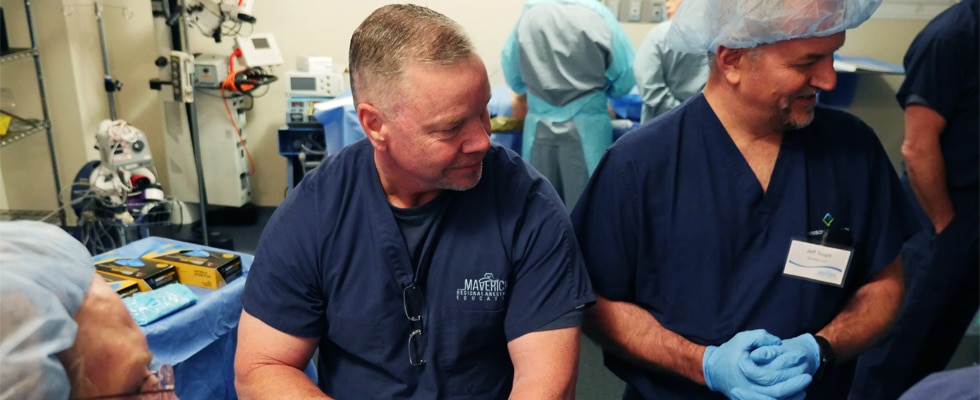
Many different types of medical professionals from several fields attend our Maverick courses. We encourage this occupational diversity due to our firm belief that there are benefits to the information contained in our courses that can help in many different clinical and non-hospital settings. Some of our students are Certified Registered Nurse Anesthetists (CRNAs), and many use the skills we teach to expand their abilities in their work and keep up with their continuing education needs. Becoming a CRNA is a decision you may want to make as you pursue your career goals and can be accomplished in the following steps.
1. Do your research. Undertaking coursework to become a CRNA is not a decision to be taken lightly. You will want to learn about the time it takes to become a CRNA, the types of classes you will be taking, and what your life will be like during your training and after you are certified to practice. According to the Texas Association of Nurse Anesthetists, it takes between 7 and 8.5 years to become a CRNA. The workday will vary considerably for CRNAs, depending on where you are placed after you finish your training, and you should speak to those in the field to learn more about day-to-day experiences.
2. Finish your RN or BSN. You will need to begin your training as a Registered Nurse before you can qualify for CRNA programs. Numerous programs throughout the world can help you with this step. In addition to learning the basics, you will complete training that teaches you the many skills you will use as a nurse. If you are already a nurse, you will want to find a program that allows you to add the BSN to your credentials.
3. Experience and training. Depending on your program, you will need some time practicing nursing before you can apply to become a CRNA. Some programs need one year, but there is much to be gained in the second or third year of practice. While you work, you may begin researching and selecting your master’s program. Many nurses work on their master’s from an accredited nurse anesthesia program while working in a hospital or doctor’s office. Herzing University states these programs “typically take between 24 and 36 months to complete”.
4. Certification. Once you have completed coursework and clinical practice, you will need to study for and pass your board certification. You will also need to be prepared to retake this certification every four years while doing continuing education hours from courses like what we offer at Maverick Medical Education.
5. Begin your career. Whether you work in a clinic, a hospital, or a different setting, you will need to congratulate yourself on completing your goals. CRNAs are in high demand across the country and can find a satisfying career ahead of them.
Benefits of Being a CRNA
The workday of a CRNA will rarely look the same, even when reporting to the same facility or hospital. The pace and workload of each day will keep you busy and interested in your work. Additionally, because the demand for CRNAs is growing, you can command positions in many states across the country, allowing for personal growth, depending on your own needs. The demand also means a relative amount of job security and fair compensation for your skills. What’s more, since you are adding to your nursing degree and experience, you can always continue your practice in your original field if you decide to shift your career once again.
Once you have decided to pursue your career goal to become a CRNA, you may find that some of our coursework is perfect for your future. We also have courses that assist in training and developing skills for other medical professions available. To learn more, contact Maverick Medical Education, today!




